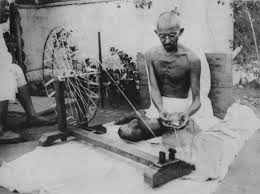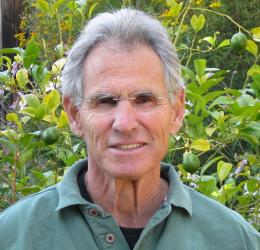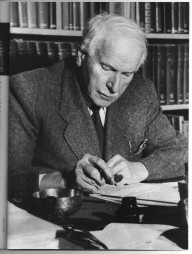This post was inspired by a search on Google for “Good movies for Empaths” and the surprising discovery that a list like this, did not really yet exist.
So I would like to begin suggesting certain films that I feel are suitable for Highly Sensitive Persons (HSP) and Empaths.
Empaths will tend to find that movies with a lot of negativity, hatred, violence, and (to a point) stupidity, will tend to rub them the wrong way. Often the negativity, violence, etc., will be taken (rather involuntarily) into the Empath’s energy field, and lodging there, become yet more weight for the Empath to energetically “carry around”, in addition to the general burden the Empath tends to pick up from the suffering/pain/sadness in the world around them.
So it is generally advisable, most Empaths find, to reduce their consumption of gratuitous violence, negative films, etc., for their own psychological, energetic, indeed even physical well-being.
Maybe more details should come on this later. We would like to begin suggesting some movies.
This should be an ongoing project that should be added to frequently. Please also suggest your own in the comments. I look forward to us putting together perhaps some kind of library or reference list (bibliography) of Films Good for Empaths:
1. Life is Beautiful (1997):
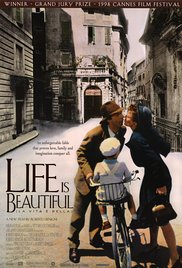
Dir. Robert Benigni http://www.imdb.com/title/tt0118799/
In a list of “empath friendly films”, it may seem counter-intuitive to begin with a movie that is set in a concentration camp during the Holocaust. But Life is Beautiful is about one man who somehow finds ways to make this singularly cruel and terrible backdrop into something, dare we say, rather fun and lighthearted.
The central character, played by Benigni, is devoted to keeping his son from feeling depressed or scared in the camp, through treating the entire situation as one great game, that nobody can let on they are playing.
While that may sound absurd and a rather tenuous premise, Benigni pulls it off brilliantly, making this one of the most heart-warming and beautiful films of all time, in my opinion (and many Empaths may feel something of the same way).
The final scene may make you cry, if you are an Empath (it never fails to for me). But they are tears not of sadness, but somewhat in awe of the great and terrible beauty, the incredible beauty and generosity human beings can show. In any case, just a wonderful movie that everyone, (especially Empaths perhaps), should see at least once.
We may also take it as a commentary on the techniques Empaths can master to “make a heaven out of” what often seems a bit more like a hell, a world that may be difficult for them. If Benigni’s character can make such a hell into a lighthearted place, perhaps we Empaths can perform a similar transformation on the more mundane hells and purgatories of our lives.
2. Adam (2009)
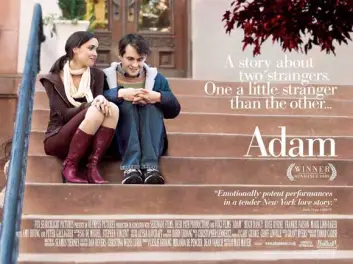
Adam, the title character, has Asperger’s syndrome. He is not an empath, as while Empaths viscerally pick up on the emotions and energies around them, those on the Asperger’s-Autistic spectrum have something of an opposite problem, generally having difficulty understanding the emotions of others.
However, those with Autism-Asperger’s do have certain things in common with Sensitive Persons (HSPs) and Empaths, which is that they tend to be far more sensitive to stimuli. Like HSPs and Empaths, they tend to feel that “the world is too much with them,” and it is a difficult place for them to live in and to interact with others.
This is a beautiful story about one man with Asperger’s, trying to make his way in the world. Many Empaths and HSPs have been mistakenly described as having Asperger’s tendencies perhaps by parents or those close to us, and it is touching to see someone with this psychological makeup getting by in the world.
Also a beautiful film and a touching story. Highly recommended.
3. Truman (2015)
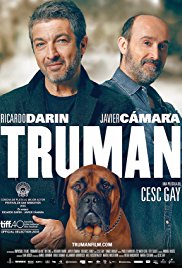
http://www.imdb.com/title/tt3754940/
“Julián receives an unexpected visit from his friend Tomás, who lives in Canada. The two men, accompanied by Julián’s faithful dog, Truman, will share emotional and surprising moments prompted by Julián’s complicated situation.”
This Spanish film is one of the most touching and real portraits of friendship, life, and the issue of death, that has come out in a long time. Truly a powerful story you will never forget. Has received excellent reviews for very good reason. This is one that will stick with you. In a good way.
As one reviewer said, “See it with a friend. You will be closer because of it.” I couldn’t agree more. But if no friend is available, see it yourself. You may find it brings you closer to humanity in general.
4. The Perks of Being a Wallflower (2012)
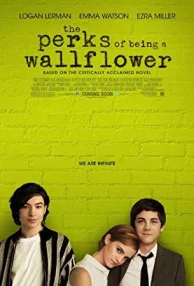
Very meaningful film especially for anyone who ever felt “out of place” in high school. Ah, the weirdos, the misfits–these are the people many Empaths can relate to, since they may often have felt that way themselves growing up.
While Empaths may have been popular or well-liked people, they undoubtedly have often felt themselves, to be people who were a little odd. The beautiful young characters of this film, are also certainly outcasts and misfits in that regard.
Many people have commented that they do not want this movie to end, since they feel like they get to know the characters so well. A very touching film.
5. Amazing Grace (2006)

Provides a good piece of history for understanding the background to the abolition of slavery in Britain… The main character is certainly portrayed as an idealist, dare we say perhaps an Empath (he has to stop his cart every time he sees a horse being beaten, getting out in the rain to rebuke and stop the perpetrator of the violence).
6. My Left Foot (1989)
Starring Daniel Day-Lewis
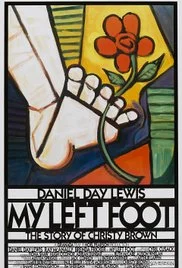
Christy Brown, born with cerebral palsy, learns to paint and write with his only controllable limb – his left foot. (This is a biopic telling the true story of Christy Brown)
Deeply inspiring picture, brilliantly acted by Day-Lewis (one of his earlier films) about being able to surmount the unique difficulties one may be born with, to live a novel life. Christy Brown is no saint-like Helen Keller, but his story is remarkable.
7. Gandhi (1984)
IMDB: Gandhi’s character is fully explained as a man of nonviolence. Through his patience, he is able to drive the British out of the subcontinent.
Every Empath should see this. One of the most beautiful biographical films ever produced, on one of the most incredible souls to walk this earth on our century. Probably the most famous Highly Sensitive Empath in human history (well… perhaps besides Buddha, Jesus, and a couple of others. Perhaps we should say, one of the most famous in “modern” history).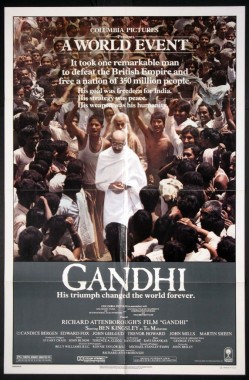
Gandhi’s story is an incredible one about how a man who was once too afraid to even speak to a table of people (feeling dizzy, stuttering and stumbling, and not able to get his words out), eventually became among the most respected moral leaders on Earth, helping a nation of over 400 million people in humanity’s first ever successful large-scale nonviolence independence movement.
A truly incredible life and accomplishment, and an incredible film.
I hope to produce some articles or books on Gandhi as Sensitive person in the future. He is really perhaps among the most accomplished and inspirational Empaths of our time.
8. Sensitive: The Untold Story (Documentary) (2015)
A groundbreaking documentary about the temperament trait of high sensitivity found in 20% of the population in both men and women. Based on the findings of bestselling author-psychologist Dr. Elaine Aron (“The Highly Sensitive Person”) (IMDB)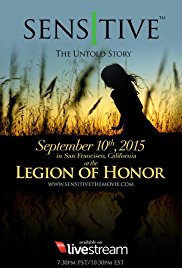
Documentary based on the work of Dr. Elaine Aron, the pioneering psychologist who first defined the trait of “High Sensitivity” (or “Highly Sensitive Persons,” and now referred to in the academic Psychology literature stemming from her work as “Sensory Processing Sensitivity”)
Elaine Aron brought scientific and public awareness to the reality of “Highly Sensitive Persons” with her groundbreaking book (The Highly Sensitive Person) published in 1996. Since then, awareness of High Sensitivity (HSP) has taken off both in public consciousness, and in respected scientific research in the field of Psychology.
High Sensitivity is an innate psychophysical trait found in about 15-20% of humans, and over one hundred species of higher animals. You can read more about it here at Dr. Aron’s official website.
We all owe a great deal of gratitude to Dr. Aron for bringing awareness to this trait. Now this feature-length documentary goes further in being the first moving picture devoted to the trait of HSP. As someone very concerned with issues facing HSPs, I was eager to see this movie, and referred the members of the groups I organize also to see it. I was not entirely satisfied with the execution (there are some things I may have done differently), but it received generally positive reviews, for good reason, and this is one of the most important, the first, and hopefully the first of many, documentaries made about HSP in our time.
A very important film for all HSPs, Sensitives, Empaths, as well as their families and friends and all people curious about this trait.
9. The End of the Tour (2015) 
The story of the five-day interview between Rolling Stone reporter David Lipsky and acclaimed novelist David Foster Wallace, which took place right after the 1996 publication of Wallace’s groundbreaking epic novel, ‘Infinite Jest.’
A sweet and rather powerful movie about an interviewer spending time with the writer David Foster Wallace. DFW is most certainly a sensitive man (and a misunderstood, rather unusual, rather brilliant one), and one would think, very probably an Empath.
10. Peaceful Warrior (2006)
“A chance encounter with a stranger changes the life of a college gymnast.”
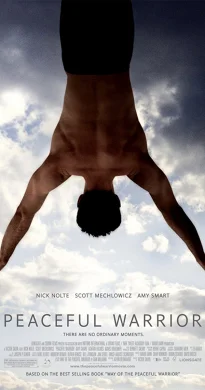
(IMDB): Dan Millman has it all: good grades, a shot at the Olympic team on the rings and girls lining up for the handsome Berkely college athlete all teams mates look up to with envy. Only one man shakes his confidence, an anonymous night gas station attendant, who like Socrates, keeps questioning every assumption in his life. Then a traffic crash shatters Dan’s legs, and his bright future. Now Socrates’s life coaching is to make or break Dan’s revised ambition.
Not a high-budget or very slick or polished film. But certainly an uplifting and inspirational, could we say “spiritual” film, that reminds one to live in the moment, follow one’s dreams, etc.
Speaks to the transience of some of the things in life we take for granted, and the importance of appreciating what we have and living in the present moment. This empath, watching this film, found himself often being “brought back to presence” by moments in the film, which is certainly an appreciated effect of seeing a movie. Keep in mind that it is a low-budget piece, with some of the acting being very B- or C-level at times, but this film is one that may inspire any empath to remember the importance of living in the present moment.
Present moment awareness, of course, being so important for those of the Empathic temperament, who have a tendency to be drawn “up” into the higher chakras or energy levels we could say, into thinking and spacey intuition, which may have a negative effect on them and lead to their “ungrounding” from their own power. Remaining present and grounding is so much more vital for Sensitives and Empaths than for anyone else.
11. Ram Dass: Fierce Grace (2001 Documentary) 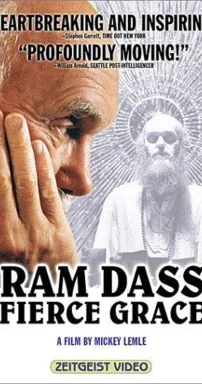
After Richard Alpert was fired from Harvard in 1963 for conducting psychedelic drug research, he journeyed to India, found a guru and was renamed Ram Dass (“Servant of God”). Soon, Ram Dass became a spiritual inspiration to people across the globe. Interspersing archival footage with intimate glimpses of Ram Dass today, RAM DASS FIERCE GRACE is a poignant meditation on hippiedom and spirituality. (IMDB)
A lesser-known (perhaps hard to find) documentary, on the spiritual teacher Ram Dass. Inspiring for anyone with interest in spirituality, the 1960’s, or the a piece of spiritual history. A very beautiful film in which we see the transformation of Ram Dass himself, his survival of a stroke and learning to deal with it, and the transformation of others along the way.
12. The Celestine Prophecy (2006) 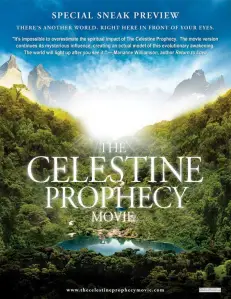
“An adaptation of James Redfield’s novel about the search for a sacred manuscript in the Peruvian rain forest.” (IMDB)
“Disillusioned and temporarily rudderless, John Woodson is about to experience a dramatic and profound metamorphosis. Through a mysterious set of coincidences, he finds himself on an adventure to Peru in search of ancient scrolls, known as the Celestine Prophecy. The prophecy and its nine key insights, predict a new awakening that redefines human life and provides a glimpse into a completely spiritual culture on earth. Resistant at first, skeptical and unsure, John finds that each step he takes, each person he encounters leads him to a new awakening. It is only in this letting go that he finds his destiny and comes to understand the meaning that had escaped him when his adventure began.” – James Redfield
Keyword: Synchronicity. If you are into Synchronicity, and the seeing of energies, auras, etc., this movie may speak to you. Warning: this movie was reviewed very poorly by critics (feel free to check), but may be enjoyed (not cinematically, necessarily), by Empaths and Sensitives for it’s voicing of a message that may resonate with their truth.
Incredibly corny at times, and certainly not a candidate to win any film awards. That said, if one can look past the rather clumsy acting and execution (which, frankly, reminded me of the rather clunky dialogue of the book), the message of one interconnected world, being open to synchronicity, and so on, is something that many Empaths may feel they resonate with, and can be rather inspirational.
13. Avatar (2009)
OK, OK. Yes, it is very mainstream, very big-budget, and the ending is rather disappointingly formulaic. But… Could we leave out a film featuring “blue people” who are so reminiscent of weird extraterrestrial Empaths? (counselling their human friend to “feel the energy,” trying to live in peaceful harmony with their environments, etc.).
A very beautiful movie, in terms of setting, story, and everything. As noted, the end is rather disappointingly predictable (the blue people defeat the bad guys in battle! Great.) But still a wonderful movie that everyone may as well see at least once.
14. Good Will Hunting (1997) 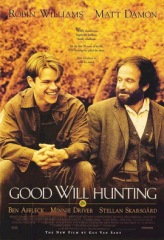
“Will Hunting, a janitor at M.I.T., has a gift for mathematics, but needs help from a psychologist to find direction in his life.” (IMDB) Starring: Robin Williams, Matt Damon.
A feel-good movie about a young man realizing his potential with the help of a mentor. A nice movie that will bring your energy up into a more positive state, rather than down.
15. The Big Short (2015) 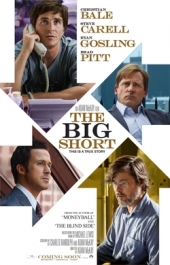
“Four denizens in the world of high-finance predict the credit and housing bubble collapse of the mid-2000s, and decide to take on the big banks for their greed and lack of foresight.” (IMDB)
An enjoyable lighthearted look, full of plenty of comedy, into the rather serious subject of the deception that led to the Financial Crisis. A rather silly film, but can satisfy Empaths’ interests in serious topics, while at the same time making us laugh and genuinely enjoy the movie.
16. Catch Me If You Can (2002)
The story of Frank Abagnale Jr., before his 19th birthday, successfully forged millions of dollars’ worth of checks while posing as a Pan Am pilot, a doctor, and legal prosecutor as a seasoned and dedicated FBI agent pursues him.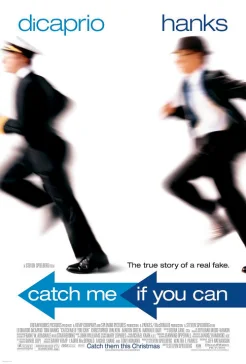
New Rochelle, the 1960s. High schooler Frank Abagnale Jr. idolizes his father, who’s in trouble with the IRS. When his parents separate, Frank runs away to Manhattan with $25 in his checking account, vowing to regain dad’s losses and get his parents back together. Just a few years later, the FBI tracks him down in France; he’s extradited, tried, and jailed for passing more than $4,000,000 in bad checks. Along the way, he’s posed as a Pan Am pilot, a pediatrician, and an attorney. And, from nearly the beginning of this life of crime, he’s been pursued by a dour FBI agent, Carl Hanratty. What starts as cat and mouse becomes something akin to father and son. (IMDB)
Another lighthearted piece that is fun all the way through, without any heavy energy for the Empath. Quite enjoyable to watch in its completeness, and a very empath-friendly choice.
A nice movie for any night of the week, entertaining and highly enjoyable.
17. Promised Land (2012) 
A salesman for a natural gas company experiences life-changing events after arriving in a small town, where his corporation wants to tap into the available resources.
Empath friendly film with environmental themes.
18. Groundhog Day (1993)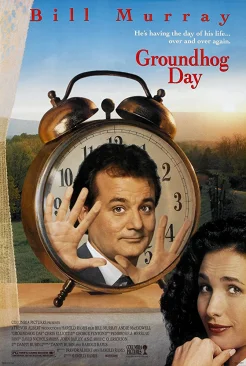
A weather man is reluctantly sent to cover a story about a weather forecasting “rat” (as he calls it). This is his fourth year on the story, and he makes no effort to hide his frustration. On awaking the ‘following’ day he discovers that it’s Groundhog Day again, and again, and again. First he uses this to his advantage, then comes the realisation that he is doomed to spend the rest of eternity in the same place, seeing the same people do the same thing EVERY day. – Rob Hartill (IMDB)
A great and genuinely funny (and in certain respects, definitely philosophical) film starring Bill Murray. A certified classic. One can take from this messages about learning to live in the moment, take the positives rather than the negatives from life, etc. Just an all-around feel good and at times hilarious film. Bill Murray at his best. Feel good all the way through.
19. Juno (2007)
Faced with an unplanned pregnancy, an offbeat young woman makes an unusual decision regarding her unborn child.
Starring: Ellen Page, Michael Cera.
Another film about young people (kind of like The Perks of Being a Wallflower) who are out of place misfits in this world. A good feeling film.
Ellen Page and Michael Cera are also two very unique actors who we think are likely also Highly Sensitive People.
20. Silver Linings Playbook (2012)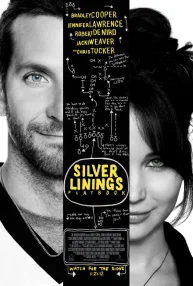
Against medical advice and without the knowledge of her husband Pat Solatano Sr., caring Dolores Solatano discharges her adult son, Pat Solatano Jr., from a Maryland mental health institution after his minimum eight month court ordered stint. The condition of the release includes Pat Jr. moving back in with his parents in their Philadelphia home. Although Pat Jr.’s institutionalization was due to him beating up the lover of his wife Nikki, he was diagnosed with bipolar disorder. Nikki has since left him and has received a restraining order against him. Although he is on medication (which he doesn’t take because of the way it makes him feel) and has mandatory therapy sessions, Pat Jr. feels like he can manage on the outside solely by healthy living and looking for the “silver linings” in his life. His goals are to get his old job back as a substitute teacher, but more importantly reunite with Nikki. . . . (Huggo, IMDB)
They may not exactly be Empaths, but these people are definitely psychologically different. An enjoyable film all the way through.
21. The Dhamma Brothers (2008) 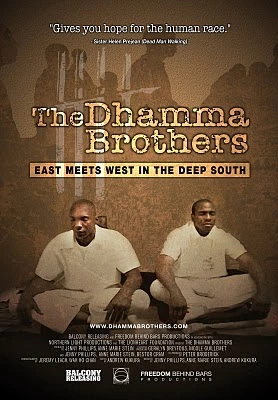
“Gives you hope for the human race.” – Sister Helen Prejean
IMDB: East meets West in the Deep South. An overcrowded maximum-security prison-the end of the line in Alabama’s correctional system-is dramatically changed by the influence of an ancient meditation program. Behind high security towers and a double row of barbed wire and electrical fence dwells a host of convicts who will never see the light of day. But for some of these men, a spark is ignited when it becomes the first maximum-security prison in North America to hold an extended Vipassana retreat, an emotionally and physically demanding course of silent meditation lasting ten days. The Dhamma Brothers tells a dramatic tale of human potential and transformation as it closely follows and documents the stories of the prison inmates at Donaldson Correction Facility who enter into this arduous and intensive program.
Inspirational and uplifting documentary about the introduction of Vipassana meditation into a maximum-security prison environment. Many of the prisoners find themselves transformed by the practice, and eventually are seen coming together to try to keep the program from being cancelled.
Any movie that “gives one hope for the human race,” is surely one that needs to be seen by Empaths and Sensitives, since they seem to be the involuntarily chosen healers and absorbers of anger, hatred, negativity, on our planet, and it is we Empaths and Sensitives who are most in need of remaining hopeful for our race and planet.
